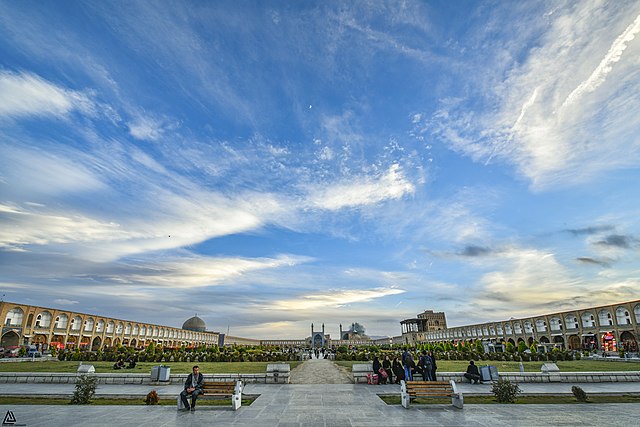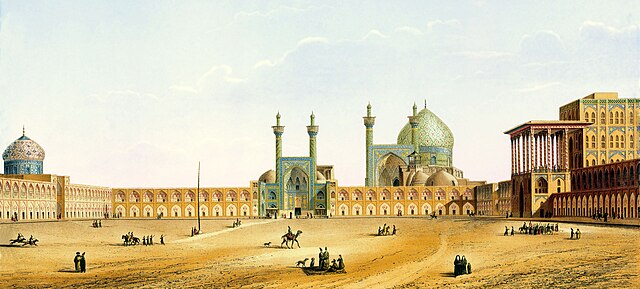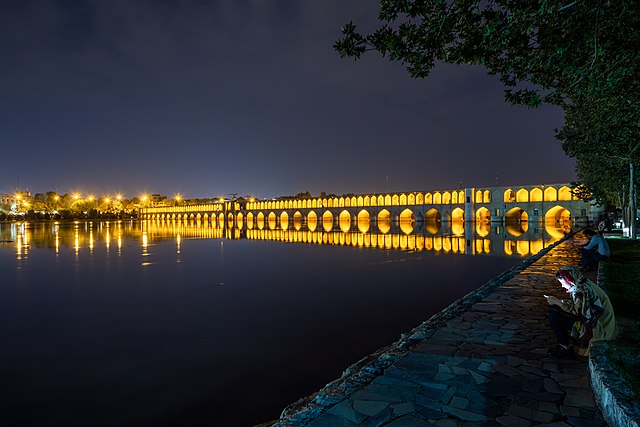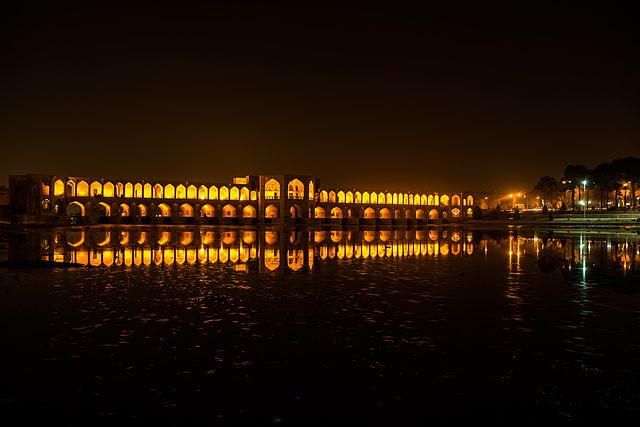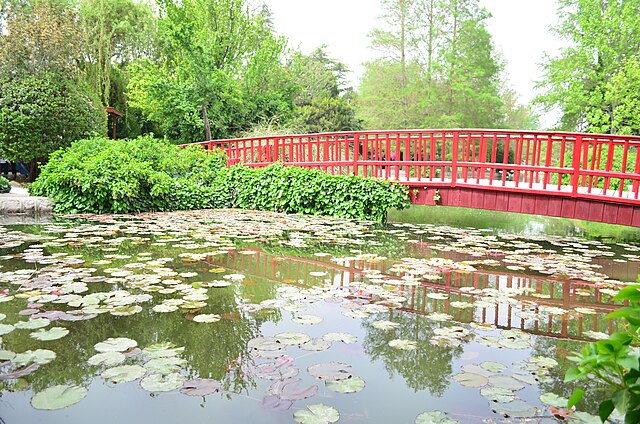Naqsh-e Jahan Square, also known as the Shah Square prior to 1979, is a square situated at the center of Isfahan, Iran. Constructed between 1598 and 1629, it is now an important historical site, and one of UNESCO's World Heritage Sites. It is 160 metres (520 ft) wide by 560 metres (1,840 ft) long. It is also referred to as Shah Square or Imam Square. The square is surrounded by buildings from the Safavid era. The Shah Mosque is situated on the south side of this square. On the west side is the Ali Qapu Palace. Sheikh Lotf Allah Mosque is situated on the eastern side of this square and at the northern side Qeysarie Gate opens into the Isfahan Grand Bazaar. Today, Namaaz-e Jom'eh is held in the Shah Mosque.
Naghsh-e Jahan square
Horse and buggy in the square
Great Bazaar of Isfahan; drawing by G. Hofsted van Essen in 1703; Leiden University Library
19th-century drawing of Naqsh-e Jahan Square, Isfahan, by French architect Xavier Pascal Coste, who traveled to Persia in 1839.
Isfahan is a major city in the Central District of Isfahan County, Isfahan province, Iran. It is the capital of the province, the county, and the district. It is located 440 kilometres south of Tehran. The city has a population of approximately 2,220,000, making it the third-most populous city in Iran, after Tehran and Mashhad, and the second-largest metropolitan area.
Image: Naghshejahan
Image: The Allahverdi Khan Bridge in night
Image: Khaju Bridge
Image: Flowers garden Isfahan Aarash (21)

